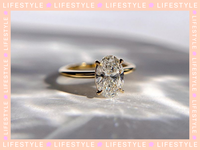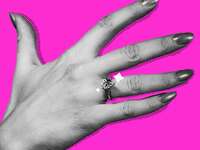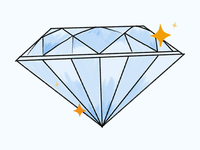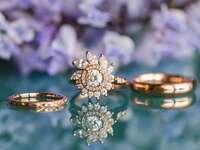35 Rustic and Raw Diamond Engagement Rings
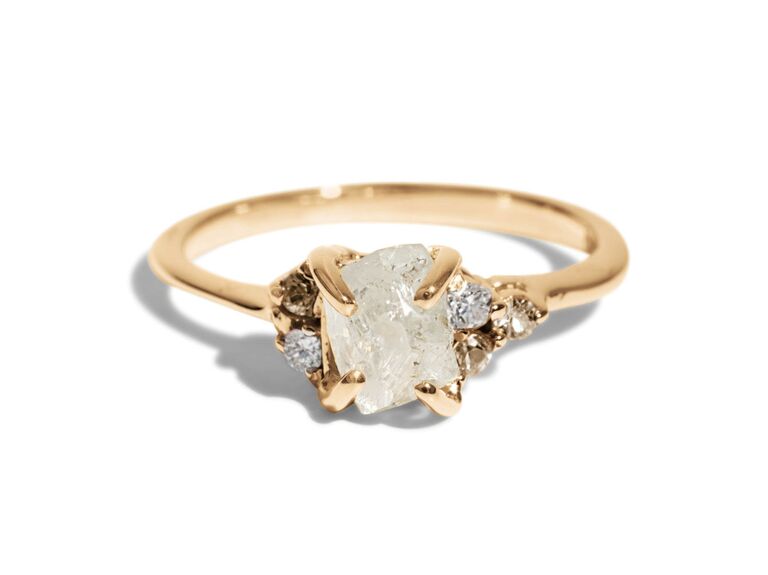
While stunning, an engagement ring with megawatt bling isn't for everyone. If subtle shimmer, an alternative center stone or a bohemian aesthetic are on your wishlist, a rustic or raw diamond engagement ring might be right for you. Unlike their brilliant counterparts, these stones have an understated—but still gorgeous—shine that catches the light from various angles and range from naturally occurring shapes to antique rose cuts. Below, read up on the difference between rustic and raw diamond engagement rings—and shop styles you can add to your cart right now.
What Is a Raw Diamond?
Raw diamonds probably look very different from how you envision a cut and polished white diamond, and there are a few reasons for that. "A raw diamond is a diamond stone that has not been faceted or polished in the traditional way. They also tend to be cloudier in appearance," says Sylva Yepremian, Creative Director of Sylva & Cie. Most raw diamonds are of lower quality material that can't be turned into faceted diamonds, where flaws and impurities become very visible. Their cloudy look is caused by inclusions (read: internal flaws or characteristics) that give the stone an opaque, glass-like appearance. While these heavily included stones aren't technically perfect, raw diamond engagement rings have lots of character and have gained popularity in recent years among to-be-weds in the market for unexpected bling. "Raw and rough cut diamonds have less brilliance, but their one-of-a-kind shapes and subdued sparkle are perfect for those with a low-key sense of style," Yepremian says.
What About a Rustic Diamond?
While it's easy to confuse the two, raw and rustic diamonds are not the same thing. While a raw diamond has not been cut or polished and often resembles a lump of glass, a rustic diamond has been shaped and polished, but still maintains a raw and organic feel. In other words, a rustic diamond has not been cut, faceted and polished to the same extent as a traditional diamond. Similar to raw diamonds, rustic diamonds are also heavily included. Depending on their color and appearance, the terms salt and pepper, icy, rough and translucent are often used to describe rustic diamonds. Fun fact: You'll frequently find rustic diamonds are rose cuts (read: an old school shape with a flat back and a faceted surface), since this cut shows off their unique shimmer.
Choosing a Rustic or Raw Diamond Engagement Ring
Given rustic and raw diamonds are alternative stones, they aren't held to the same standards as traditional white diamonds. When choosing a rustic or raw diamond, forget about the 4C's and focus on finding a stone that appeals to you visually. Are you drawn to the rainbow opalescence of an icy diamond? Or, do you love the twinkle of a salt pepper stone? Consider the vibe you're going for and choose the rustic or raw diamond engagement ring that speaks to you. Bonus: Rustic and raw diamond engagement rings tend to be less expensive than their cut and polished counterparts, since they're less labor intensive to create.
Rustic and Raw Diamond Engagement Rings You Can Shop Now
Feeling a rustic or a raw diamond engagement ring right now? Shop some of our faves below.

Glow for it. The light peach center stone of this raw diamond engagement ring gives it a gorgeous warm shimmer.
Chinchar Maloney Icy peach diamond ring in rose gold, $5,389, ChincharMaloney.com
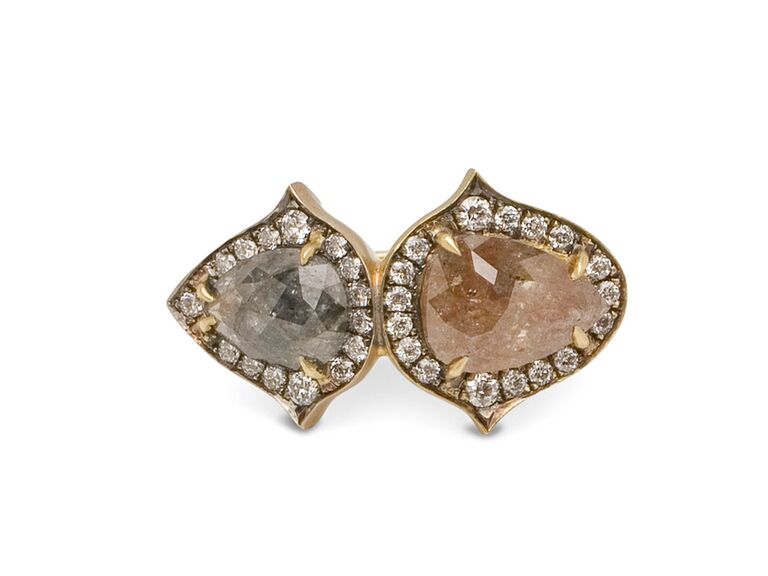
Two stone engagement rings (also called Toi et Moi rings) are one of the hottest engagement ring trends of 2021. This one featuring two raw diamonds surrounded by old European cut stones makes a seriously chic statement.
Sylva & Cie Rough and old European cut double diamond ring, $14,250, StanleyKorshak.com

If you're in the market for a more polished take on a rustic engagement ring, this sparkler with an old mine cut diamond flanked by two kite-shaped diamonds is the perfect combo of trendy and timeless.
Kelty Pelechytik Elise ring with reclaimed old mine cut diamond, $5,860, KeltyPelechytik.com
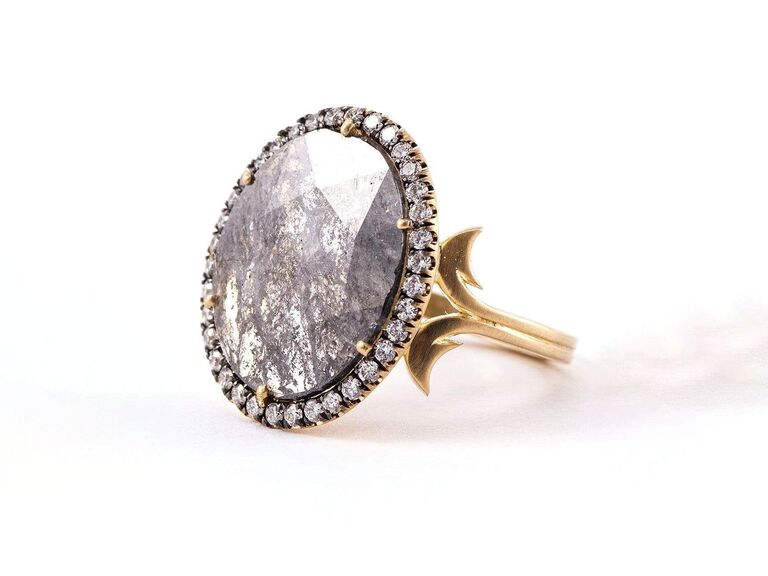
Get ready to turn heads. This oval rough cut stone surrounded by a halo of round brilliant cut diamonds is a standout look.
Sylva & Cie Oval rough cut diamond ring, $15,000, MarissaCollections.com
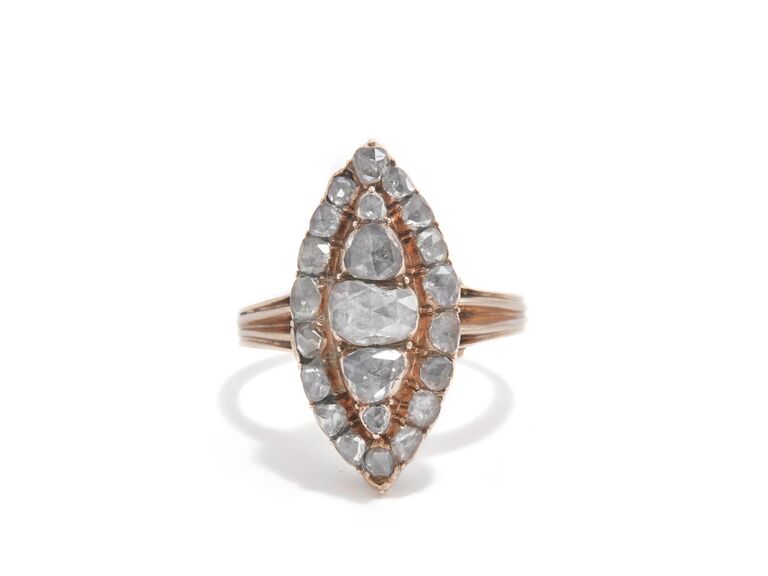
Dating back to the end of the Georgian era, this vintage piece features 23 antique cut diamonds and has an instant heirloom quality.
Ashley Zhang Rose cut diamond navette ring, $3,850, AshleyZhangJewelry.com
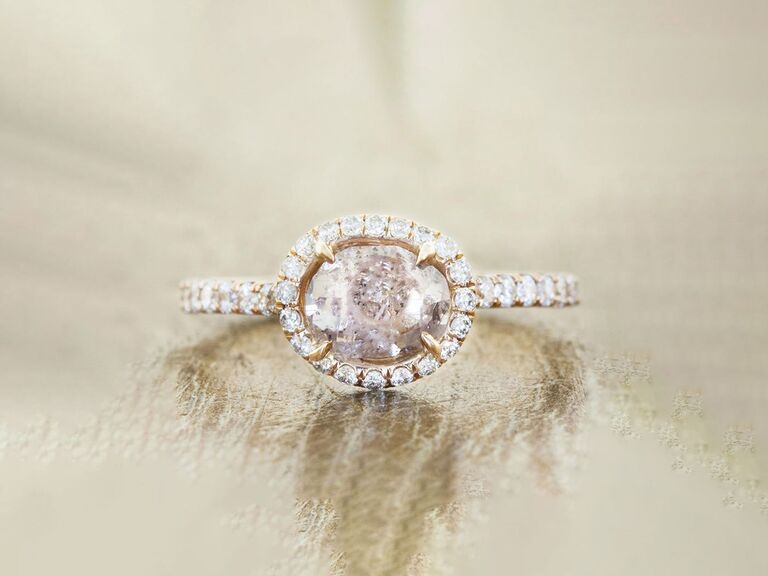
If you're drawn to a ring with stone-washed color, consider a rustic pink diamond. They're more understated (read: less flashy) than their polished pink counterparts.
Ken and Dana Designs Alix rustic pink diamond ring, from $2,750, KenandDanaDesigns.com

No band wedding necessary here. A kite-shaped brown diamond with a diamond baguette tiara is elaborate enough to stand on its own.
Jacquie Aiche Kite brown diamond baguette diamond lash ring, $2,375, JacquieAiche.com
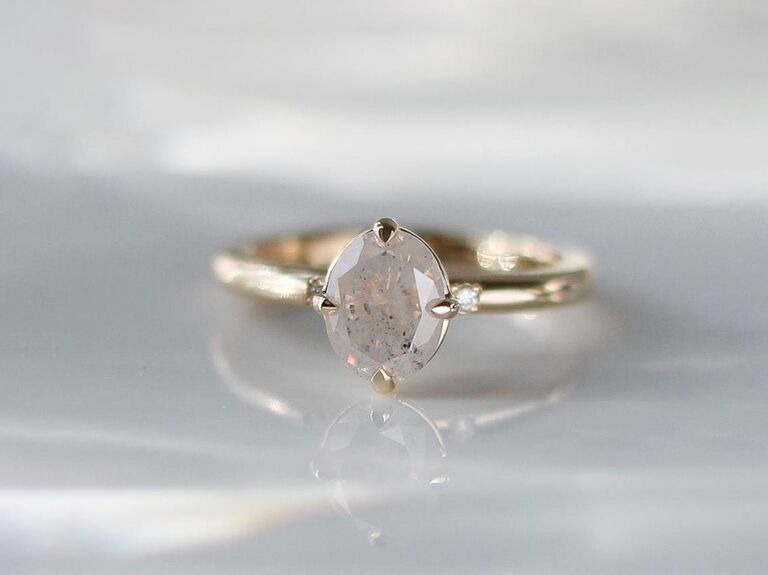
One of the coolest things about icy diamonds? Their opalescent shine. This one has fiery flashes of rainbows and peppery inclusions.
Yuliya Chorna Around the World oval icy diamond ring, $4,300, YuliyaChornaJewellery.com

The rich green-blue hue of this rustic diamond is the perfect bohemian "something blue". Psst: Blue engagement rings also just happen to be one of the biggest trends of 2021.
Niza Huang Blue pear cut diamond yellow gold ring, Inquire for Price, NizaHuang.com

A huge pro of a Toi et Moi setting? The ability to mix and match stones. Light yellow and canary yellow rough diamonds make a pretty pair.
Ornamento Studio Yellow rough diamond ring, $1,520, Etsy.com
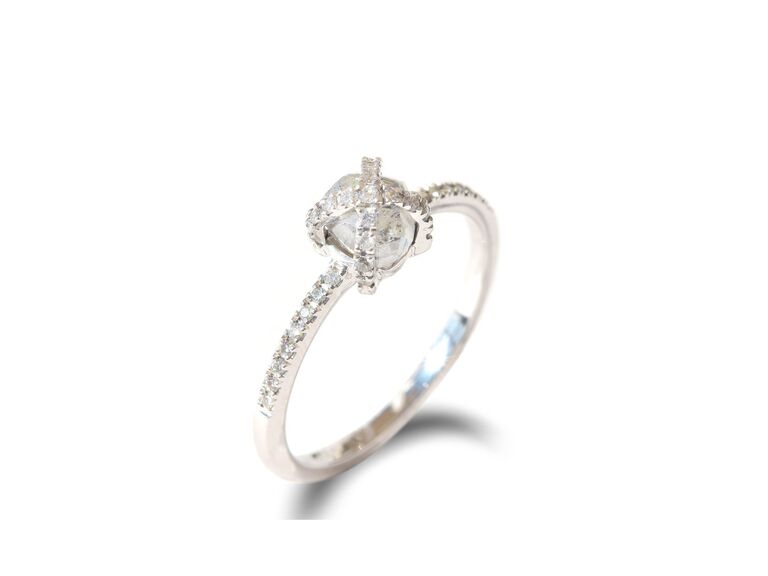
The criss-cross setting of this ring holds the rough diamond in place and gives this petite engagement ring lots personality.
The Raw Stone Magen criss-cross setting and rough diamond engagement ring, $1,800, TheRawStone.com
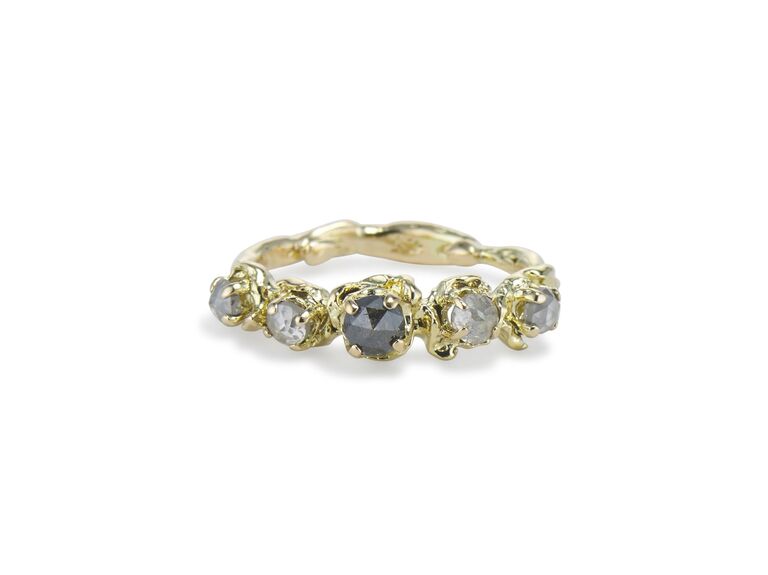
You don't have to opt for a raw diamond engagement ring to work unique stones into your stack. This dainty band featuring smaller rose cut diamonds works all on its own.
Olivia Ewing Union diamond five stone ring, $2,700, OliviaEwing.com
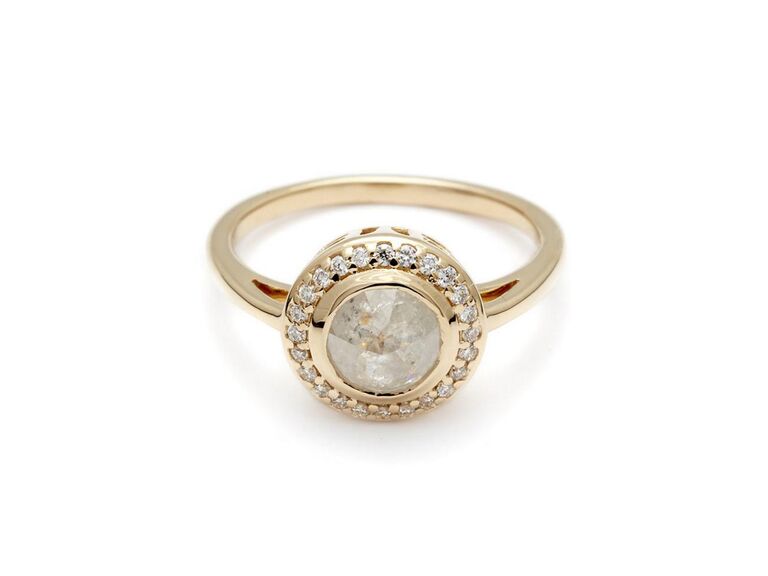
Raw but refined. A velvety yellow gold bezel setting with a halo gives this raw gray diamond an overall polished look.
Anna Sheffield Bezel Round Rosette ring, $4,000, AnnaSheffield.com
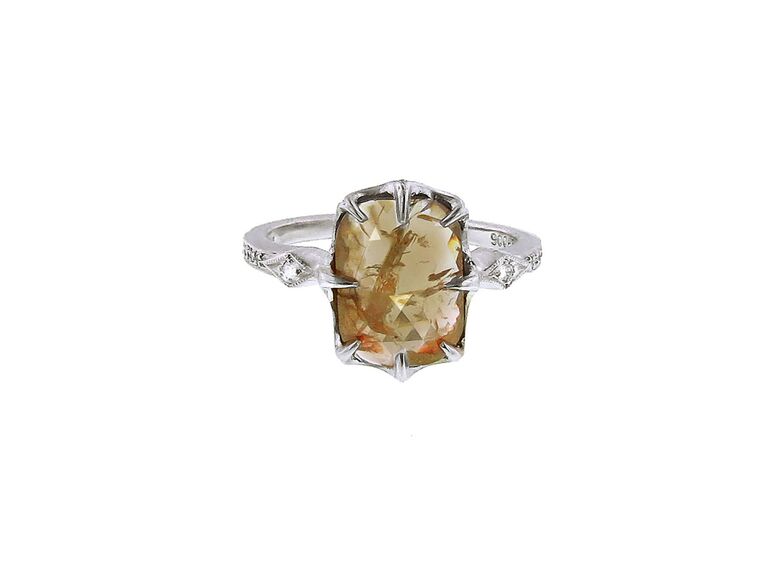
Minimal metal, maximal shimmer. A large and in charge rustic diamond is the center of attention in this pared down platinum setting.
Cathy Waterman Fine rustic diamond platinum ring, $15,330, Ylang23.com
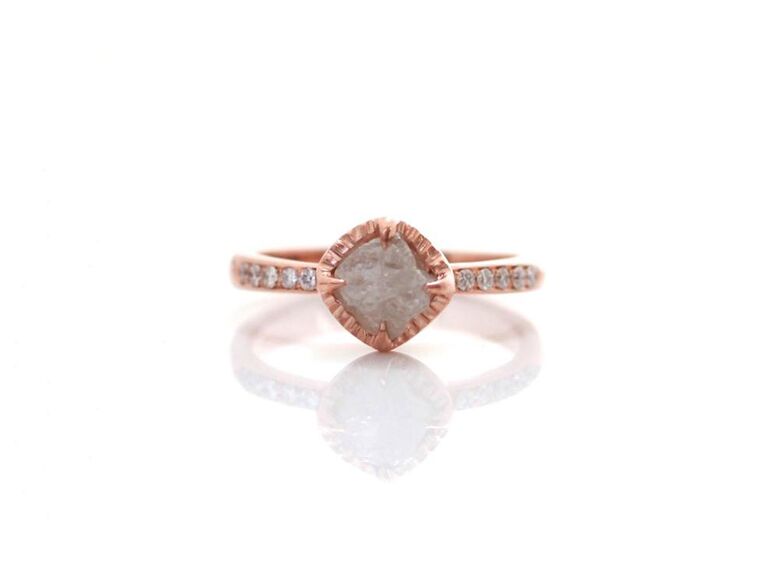
Rustic meets romance with this raw light gray diamond in a mixed bezel and claw rose gold setting.
Yuliya Chorna Canadian raw diamond gold solitaire, $2,500, YuliyaChornaJewellery.com
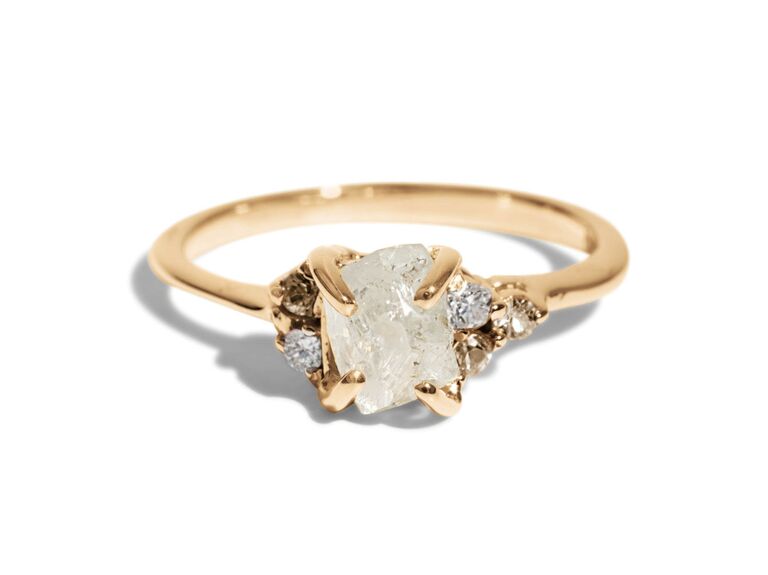
Champagne and white diamond accent stones flank a raw diamond center stone for a sparkly, earth-toned ombré effect.
Bario Neal Avens asymmetrical raw diamond with champagne ombré ring, from $2,829, BarioNeal.com
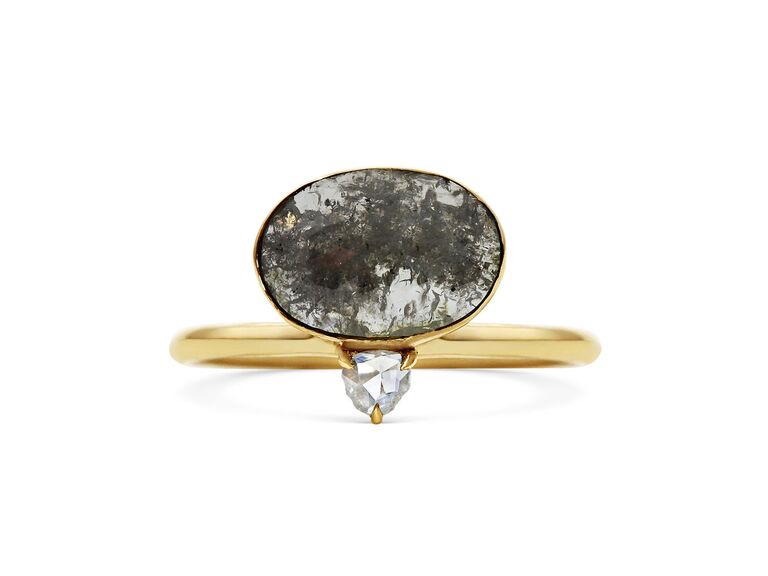
Opposites attract. The juxtaposition of a dark gray diamond slice and a rose cut diamond creates a striking contrast.
Michelle Oh Anoushka diamond slice and rose cut diamond ring, Inquire for Price, Michelle-Oh.com
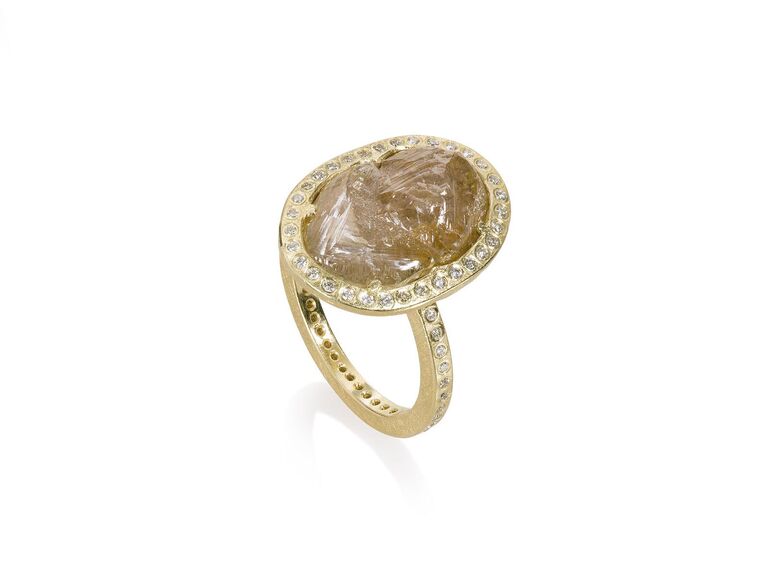
If you're going for a lot of look, this is the raw diamond engagement ring for you. Featuring over 11 carats of diamonds, this impressive sparkler brings the drama.
Todd Reed TRDR342 ring with a rough diamond and white brilliant cut diamonds in yellow gold, Inquire for Price, ToddReed.com

Calling all old souls. This antique stunning from the Georgian era features 13 rose cut diamonds cut by candlelight and set over 200 years ago. We swoon.
Devereux Charlotte old rose cut diamond cluster ring, $3,100, DevereuxCollection.com
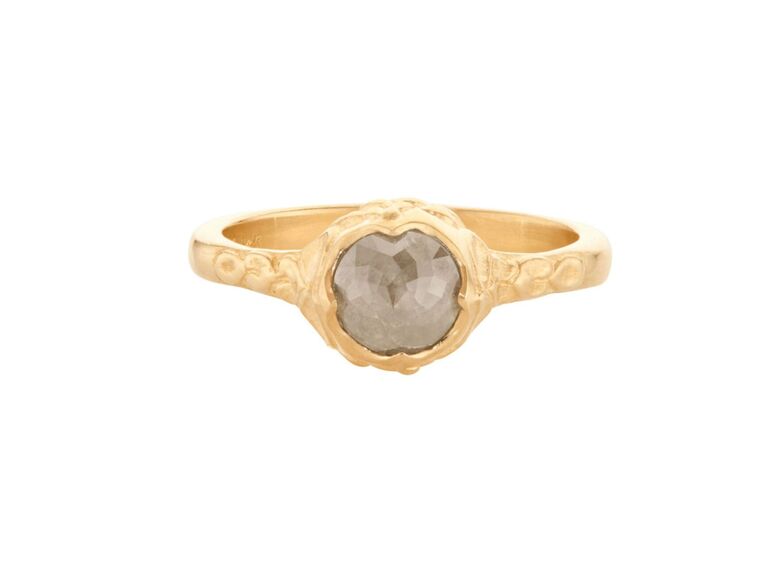
A hand-carved gold shank and setting play up the inherently artisanal aesthetic of a gray rose cut diamond.
Susan Highsmith Mend rose cut diamond ring, $4,150, CatbirdNYC.com
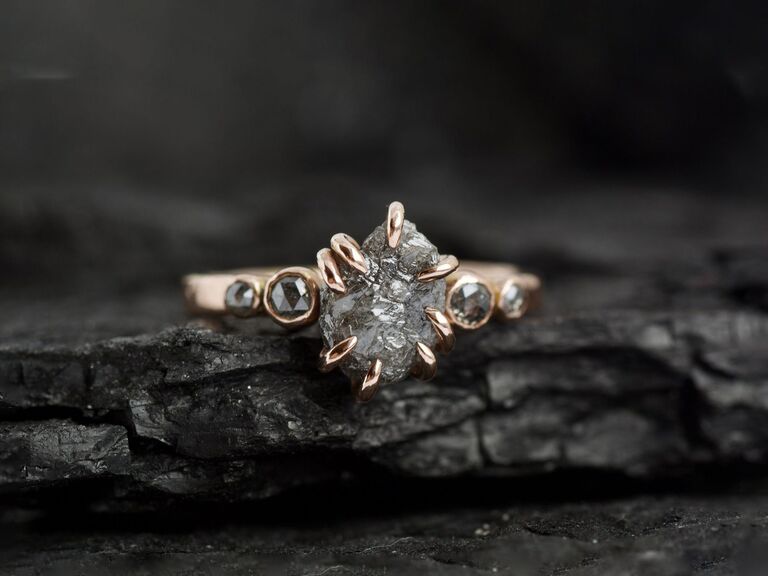
The hidden meaning of this raw diamond engagement ring makes it extra-special. The eight claws of its prong setting symbolize a sideways eight (aka an infinity sign), representing endless love.
eMeraki Studio Eternal Love rough gray diamond engagement ring, from $845, Etsy.com
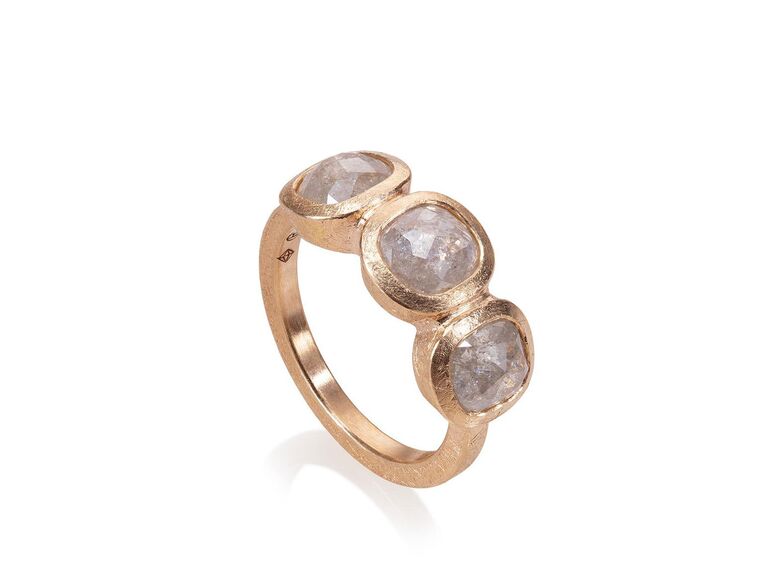
Historically, three-stone rings represent your past, present and future with your partner. Rustic diamonds give this symbolic setting a modern update.
Todd Reed TRDR491-RG5 ring with fancy cut diamond in rose gold, Inquire for Price, ToddReed.com
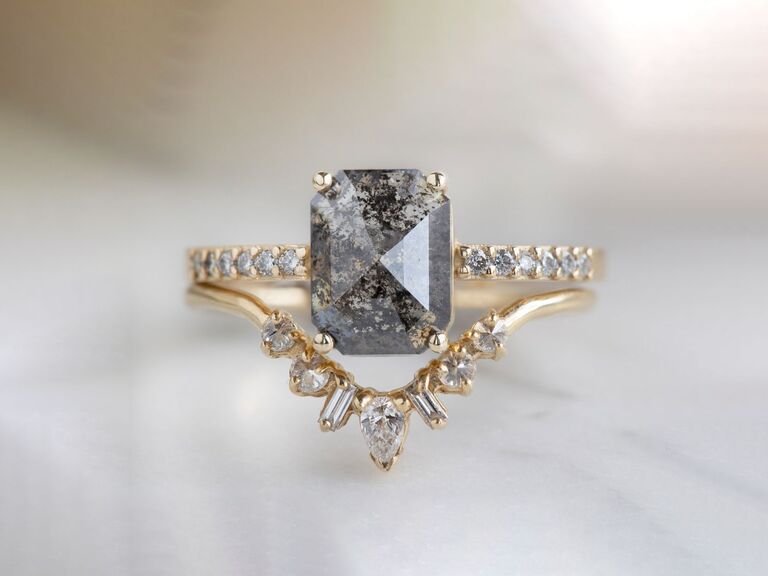
The clean lines of this emerald cut salt and pepper diamond make it ideal for creating an eclectic bridal set. Add a diamond tiara for a stack with a boho-glam feel.
Alexis Russell Willow ring with salt and pepper emerald cut diamond, $4,195, AlexisRussell.com
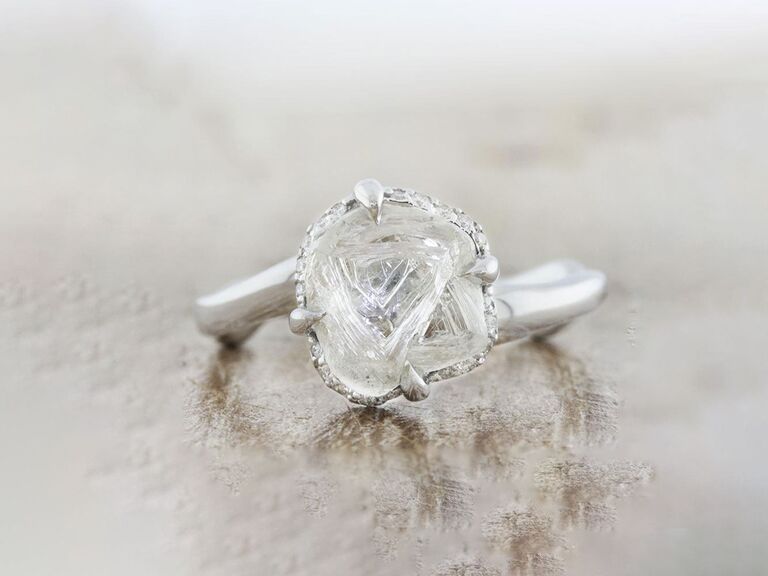
For an über-modern take on the classic diamond engagement ring, consider a rough diamond in a white metal setting.
Ken and Dana Designs Novella rough diamond ring, from $1,900, KenandDanaDesigns.com
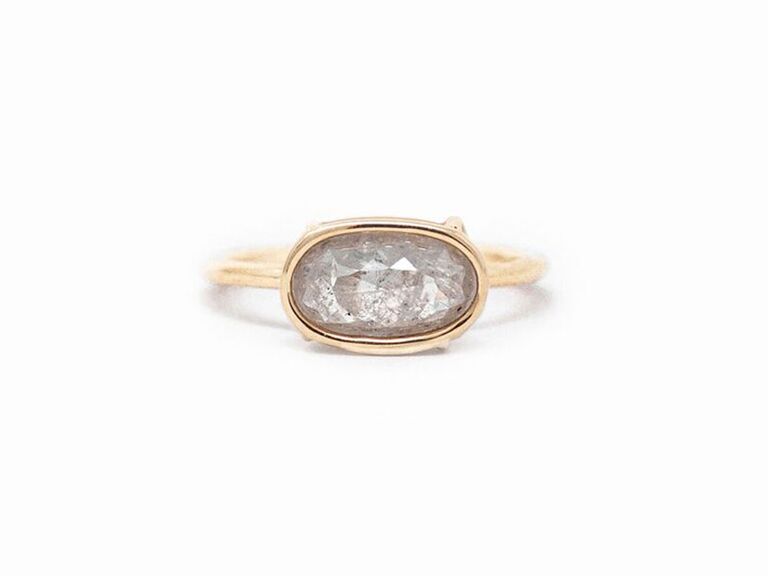
This rustic diamond engagement ring's simple yellow gold bezel setting puts all the focus on a stunning center stone.
Mary MacGill Rustic diamond floating ring in east-west setting, $6,150, MaryMacGill.com

There's nothing expected about this golden-hued sparkler featuring an edgy X-shaped setting and rustic champagne diamond.
Apres Jewelry The Cleo ring with rustic diamond, from $1,475, ApresJewelry.com
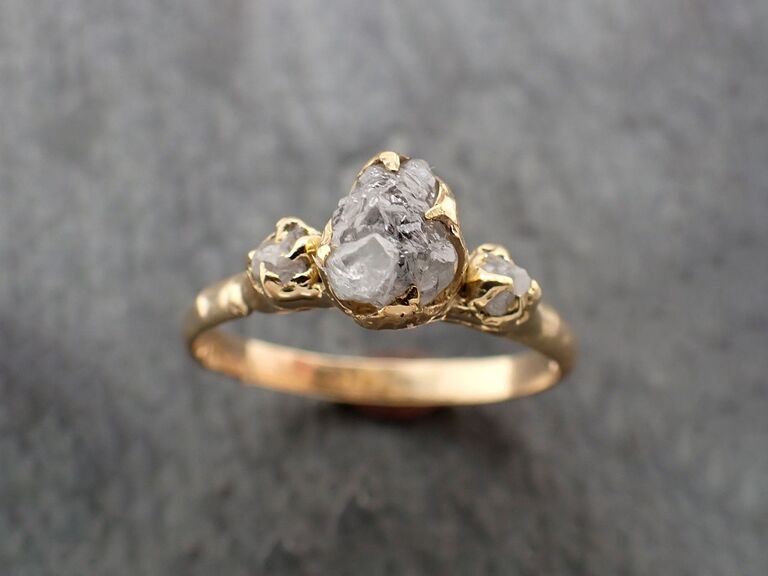
The textured yellow gold setting of this raw diamond engagement ring amplifies the organic vibe of its three unpolished diamonds.
By Angeline Raw diamond engagement ring, $1,595, ByAngeline.com

Double delight. A raw gray diamond and raw white sapphire give this already fashion-forward two stone setting some extra edge.
Bario Neal Custom raw diamond open lash dyad ring, $3,000, BarioNeal.com
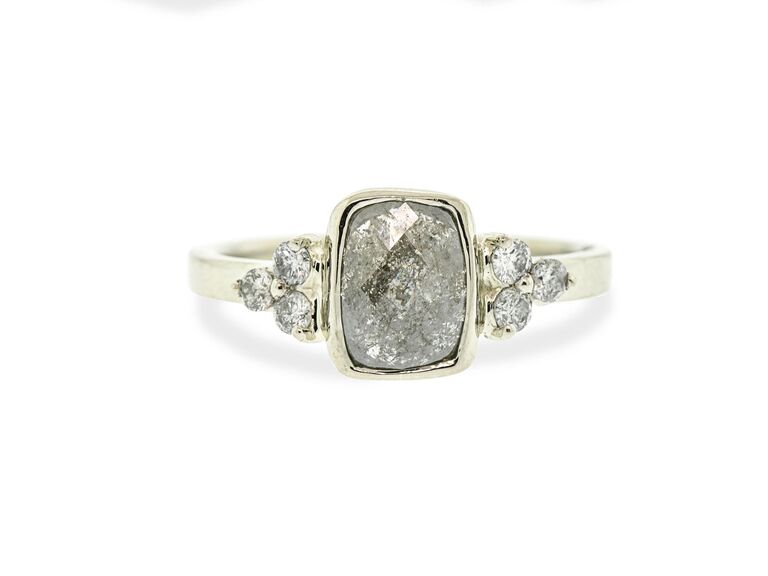
A blue-gray rustic diamond center stone in a thicker bezel setting accented with diamond clusters is elegant but still feels handcrafted.
Chinchar Maloney Rustic gray diamond ring in white gold, $3,510, ChincharMaloney.com

Take the natural feeling of a raw diamond engagement ring to the next level with a botanical-inspired setting of gilded twigs and leaves.
Dawn Vertrees Jewelry Raw diamond twig and leaf gold engagement ring, $1,430, Etsy.com
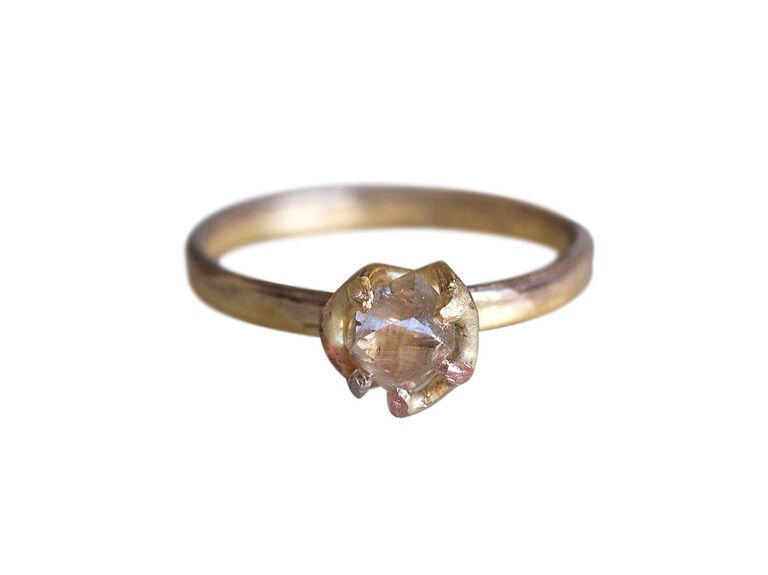
Tiny but mighty. Stack this rough diamond ring with complementary yellow gold bands or wear it alone for the ultimate bridechilla look.
Variance Objects Rough diamond ring with skinny yellow gold band, $2,590, VarianceObjects.com
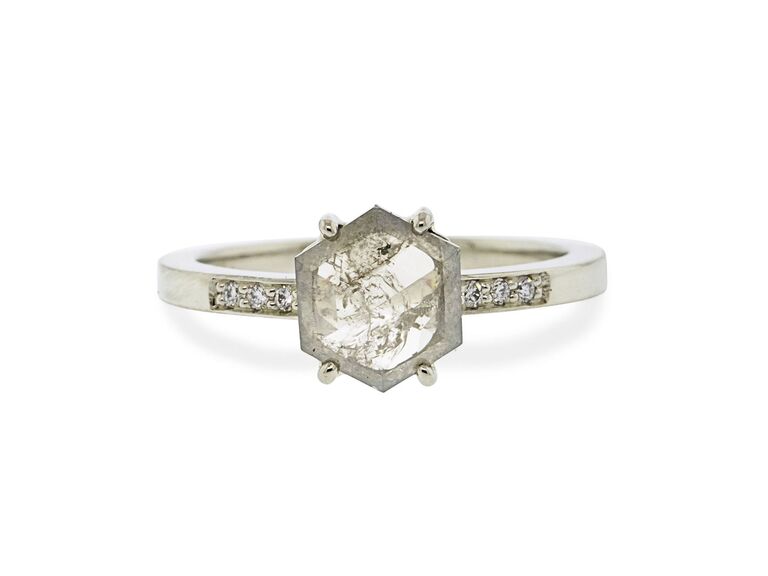
An alternative center stone like this icy salt and pepper diamond calls for an equally alternative setting. A white gold hexagonal halo is just that.
Chinchar Maloney Icy Salt & Pepper Diamond Ring in White Gold, $4,675, ChincharMaloney.com
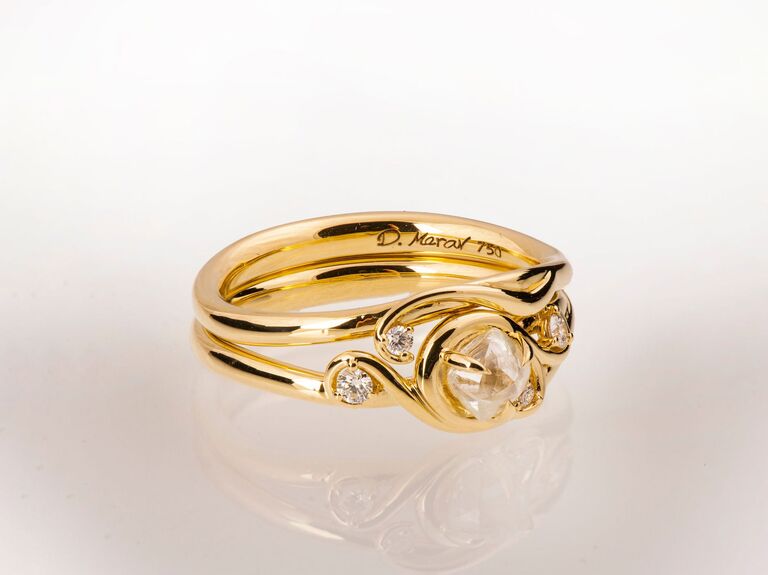
Raw diamond engagement rings don't have to feel super earthy. This whimsical gold setting with a raw diamond and polished diamond accents is the best of both worlds.
Doron Merav Raw diamond engagement ring, $1,400, Etsy.com
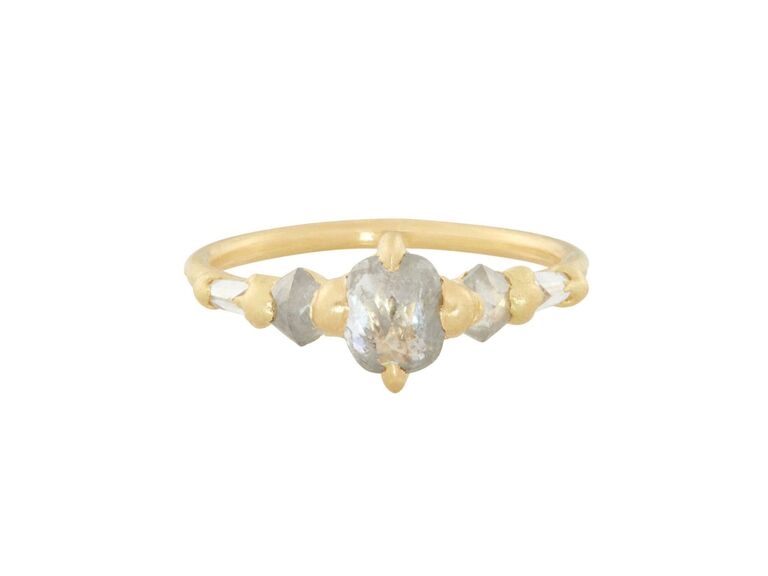
Pair this dainty ring with a simple yellow gold band to let the shimmery rose cut and baguette diamonds do all the talking.
Polly Wales Ruskala gray rose cut diamond ring, $6,820, CatbirdNYC.com
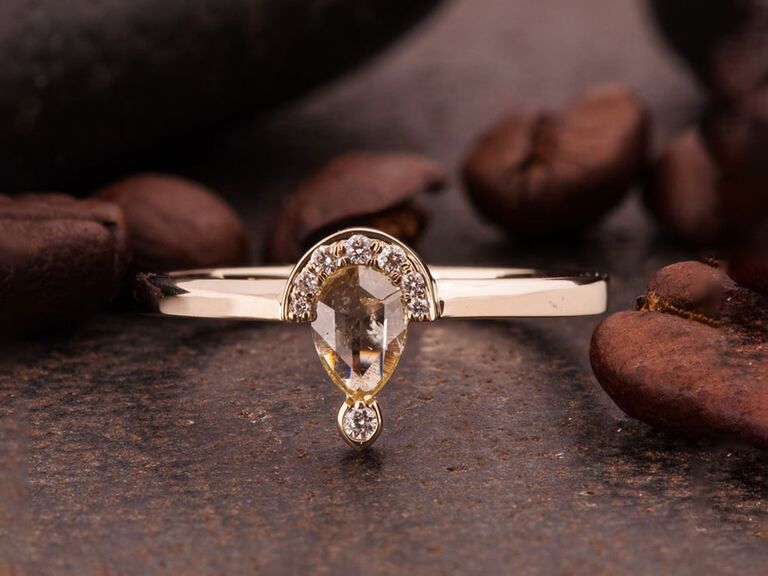
Inspired by Art Nouveau, this rose cut, pear shaped rustic diamond with a semi-halo gives a nod to the beauty of a bygone era.
Blossom and Such Rose cut diamond ring, $1,170, Etsy.com

